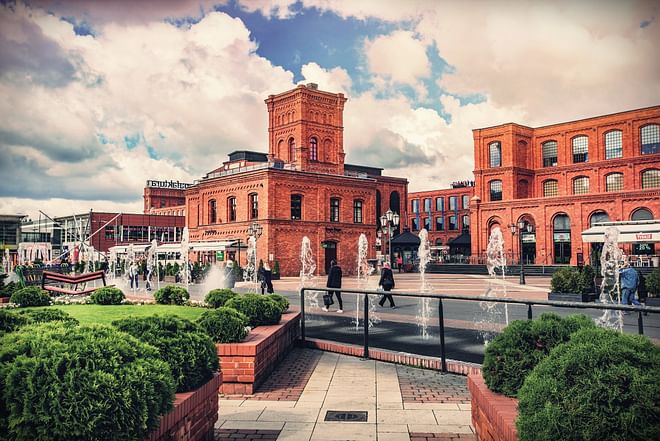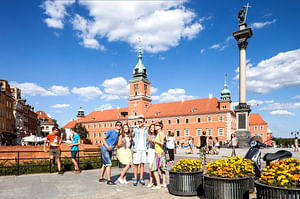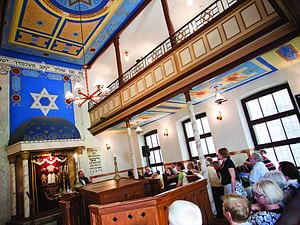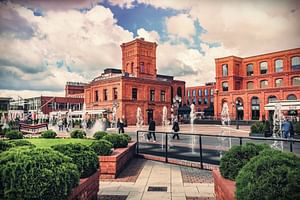Factory-residential complex on the River Jasień was built in the 19th century by Karol Scheibler,...
Factory-residential complex on the River Jasień was built in the 19th century by Karol Scheibler, the richest industrialist of Lodz. It was a self-sufficient city inside a city modeled on English industrial settlements. It had factory buildings, including a huge castle-like cotton mill, warehouses, workers’ houses, school, fire station, two hospitals, gasworks, factory club, shops, houses of the owners, and a railway siding. All that was placed along straight cobbled streets and it was architecturally coherent.
Urban complex “Księży Młyn” (in English Pastor’s Mill) is the biggest historic factory complex in Lodz from the second half of the 19th century, built in the location of an old milling settlement that belonged to the local pastor, which is where the name originated from. It was created by Karol Wilhelm Scheibler, an entrepreneur from western Rhineland, who arrived in the Kingdom of Poland in 1848 and after a few years settled down in Lodz. The complex includes factory buildings, residential buildings, houses of the owners, directors’ mansions, school, hospitals, fire station, gasworks, factory club, and gardens and parks. Scheibler began to build his cotton empire from the factory complex at the Water Square (today Victory Square). His consequent investments already included the area of Księży Młyn, where the largest multidivisional factory complex of cotton textiles together with the workers’ settlement and the house of the plant’s director was erected. Experience gained while working for western European companies and openness to technical advances made Scheibler a leading factory owner in Lodz, and he became a model for numerous entrepreneurs of that time.
In a narrow sense, Księży Młyn is the name of a settlement, huge cotton mill and workers’ houses with a street, located on the western side of Przędzalniana Street, between Tymienieckiego and Fabryczna streets and Źródliska Park I. In a broader sense, it includes the entire urban complex which had formed up to the 1920’s, including the Scheibler and Grohman families’ estates. In 1971 the urban complex was recognized as an industrial architecture monument.
The fall of the textile industry in Lodz forced the change of the settlement’s function. Today Księży Młyn is a magnet for tourists, artists, and photographers. The remarkable post-factory interiors are venue for interesting cultural events, festivals, fashion shows, while the former mansions have been converted into museums.












